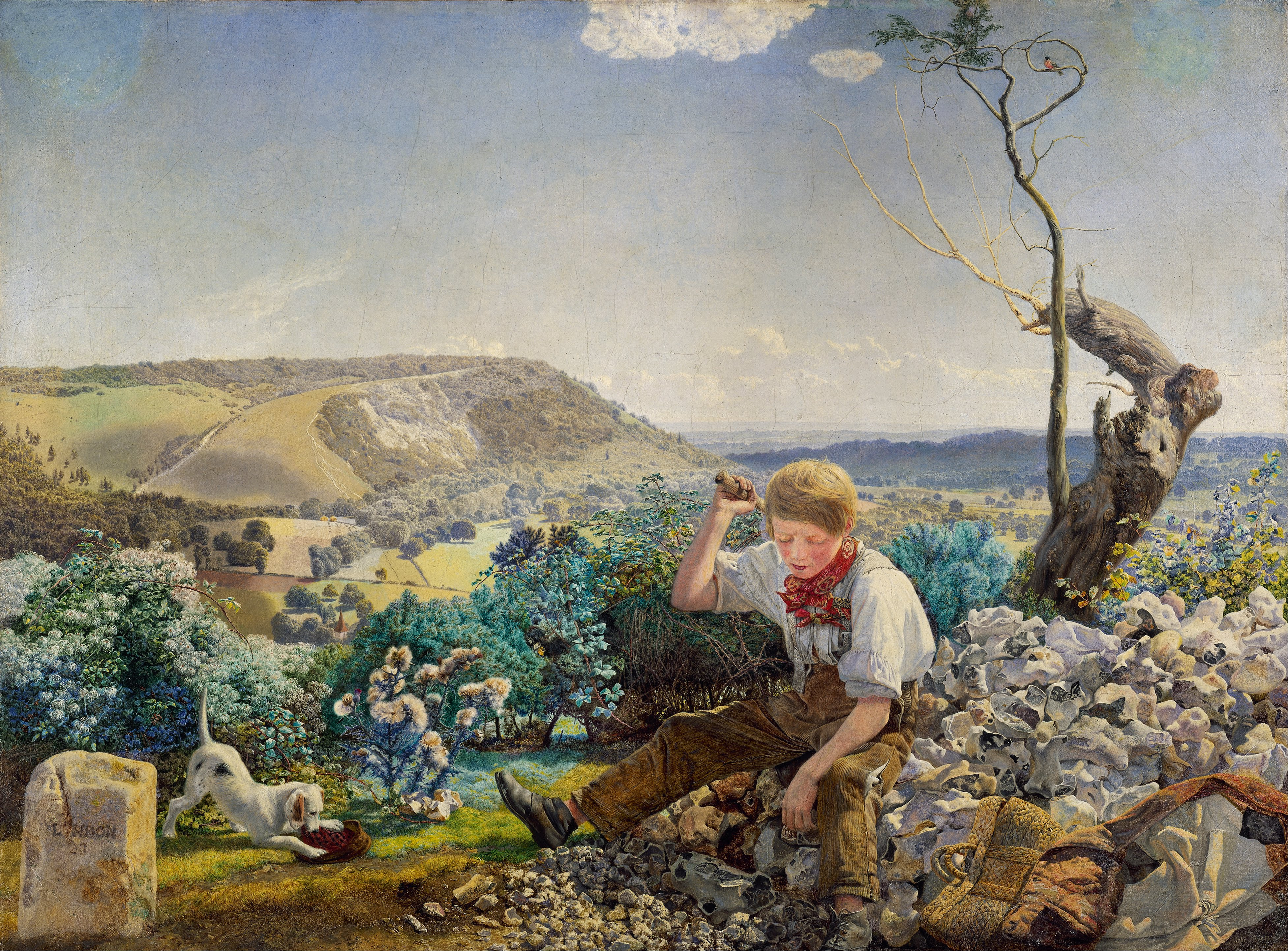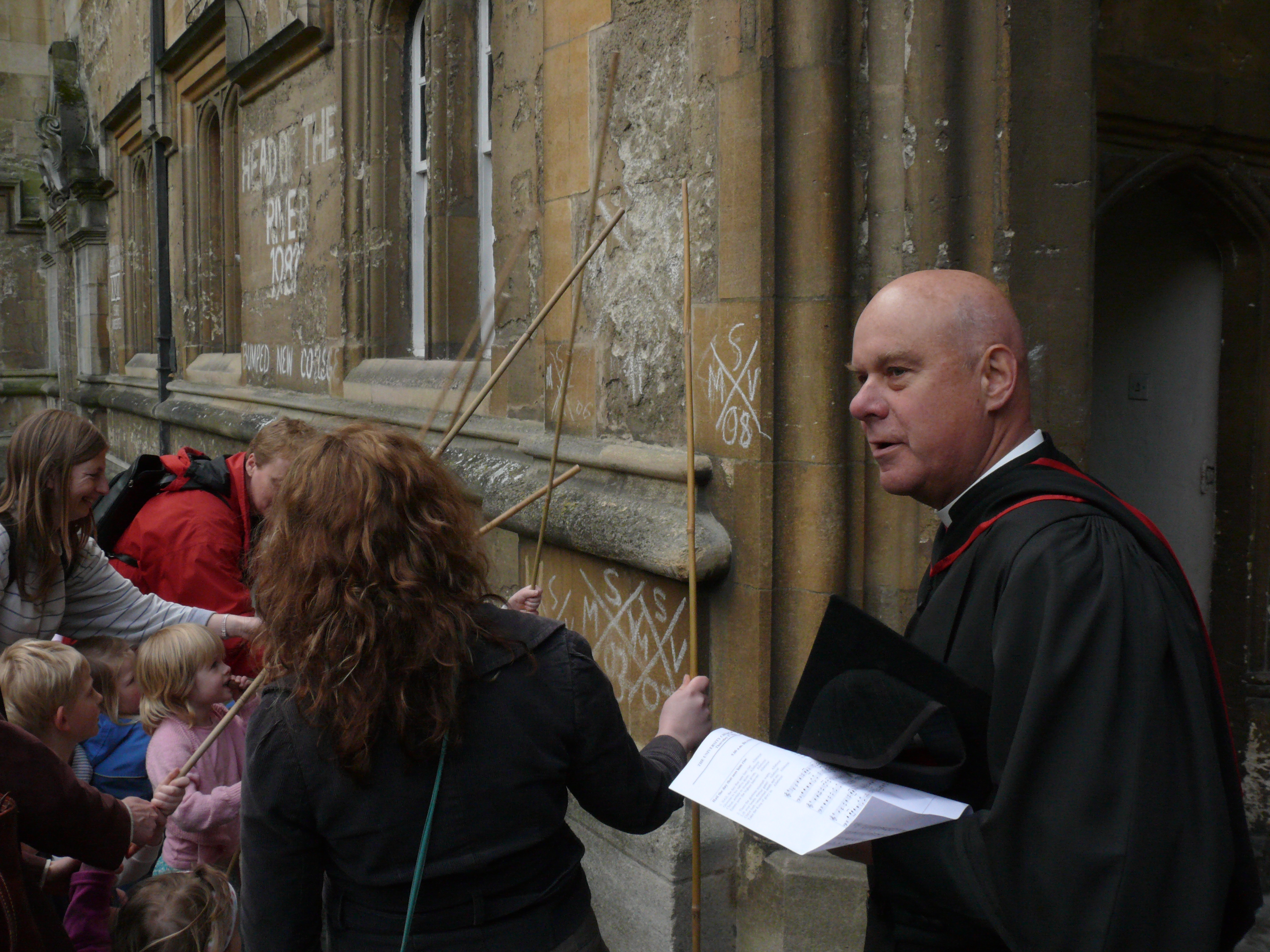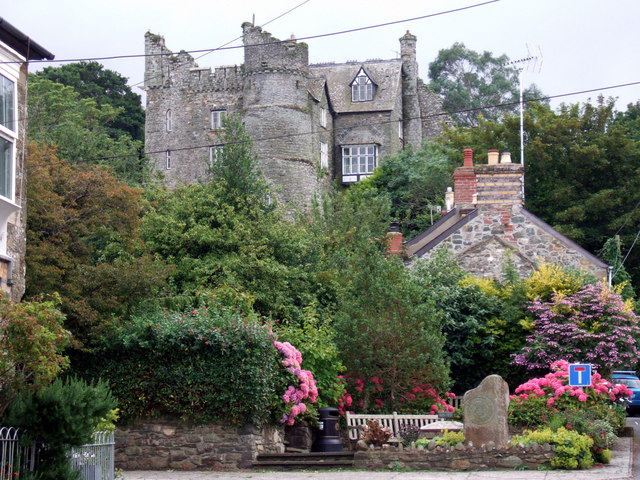|
Newport, Pembrokeshire
Newport () is a town, Community (Wales), community, electoral ward and ancient port of ''Parrog'', on the Pembrokeshire coast in West Wales at the mouth of the River Nevern () in the Pembrokeshire Coast National Park. The town gives its name to Newport Bay (Wales), Newport Bay.Ordnance Survey A popular tourist destination, Newport town straddles the Fishguard to Cardigan, Ceredigion, Cardigan A487 road, (A487) road, while the old port area hosts beach, water and other activities. History The town was founded by the Normans, Norman William FitzMartin (c. 1155 – 1209) in about 1197. He was a son-in-law of the Lord Rhys, who nevertheless expelled him from his former base at nearby Nevern, which had been established by his father Robert fitz Martin. William founded Newport as the new capital of the Marcher Lordship of Cemais (Dyfed cantref), Cemais and it was a busy port founded primarily on the growing medieval wool trade. Despite seizure from the native Welsh, it remained wi ... [...More Info...] [...Related Items...] OR: [Wikipedia] [Google] [Baidu] |
Pembrokeshire
Pembrokeshire ( ; ) is a Principal areas of Wales, county in the South West Wales, south-west of Wales. It is bordered by Carmarthenshire to the east, Ceredigion to the northeast, and otherwise by the sea. Haverfordwest is the largest town and administrative headquarters of Pembrokeshire County Council. The county is generally sparsely populated and rural, with an area of and a population of 123,400. After Haverfordwest, the largest settlements are Milford Haven (13,907), Pembroke Dock (9,753), and Pembroke, Pembrokeshire, Pembroke (7,552). St Davids (1,841) is a city, the smallest by population in the UK. Welsh language, Welsh is spoken by 17.2 percent of the population, and for Landsker Line, historic reasons is more widely spoken in the north of the county than in the south. Pembrokeshire's coast is its most dramatic geographic feature, created by the complex geology of the area. It is a varied landscape which includes high sea cliffs, wide sandy beaches, the large natural ... [...More Info...] [...Related Items...] OR: [Wikipedia] [Google] [Baidu] |
Marcher Lords
A marcher lord () was a noble appointed by the king of England to guard the border (known as the Welsh Marches) between England and Wales. A marcher lord was the English equivalent of a margrave (in the Holy Roman Empire) or a marquis (in France) before the introduction of the title of "marquess" in Britain; no marcher lord ever bore the rank of marquess. In this context, the word ''march'' means a border region or frontier, and is cognate with the verb "to march", both ultimately derived from Proto-Indo-European ''*mereg-'', "edge" or "boundary". The greatest marcher lords included the earls of Chester, Gloucester, Hereford, Pembroke and Shrewsbury (see also Earl of March#Earls of March in the Peerage of England, English earls of March). County palatine Some strong earldoms along the Welsh border were granted the privileged status of county palatine shortly after the Norman Conquest, but only that based on Chester survived for a long period. The term particularly applies to A ... [...More Info...] [...Related Items...] OR: [Wikipedia] [Google] [Baidu] |
Pembrokeshire County Council
Pembrokeshire County Council () is the local authority for the county of Pembrokeshire, one of the principal areas of Wales. History There have been two bodies called Pembrokeshire County Council. The first existed from 1889 until 1974, and the current one was created in 1996. Elected county councils were established in 1889 under the Local Government Act 1888, taking over administrative functions previously performed by unelected magistrates at each county's quarter sessions. The town of Haverfordwest was a county corporate with its own quarter sessions, but was deemed too small to run its own county council functions; it was therefore included in administrative county of Pembrokeshire and administered by Pembrokeshire County Council. The first elections were held in January 1889, and the council came into its powers on 1 April 1889. On that day the council held its formal meeting at the Shire Hall in Haverfordwest, the courthouse (built 1837) which had served as the meetin ... [...More Info...] [...Related Items...] OR: [Wikipedia] [Google] [Baidu] |
Schooner
A schooner ( ) is a type of sailing ship, sailing vessel defined by its Rig (sailing), rig: fore-and-aft rigged on all of two or more Mast (sailing), masts and, in the case of a two-masted schooner, the foremast generally being shorter than the mainmast. A common variant, the topsail schooner also has a square topsail on the foremast, to which may be added a Topgallant sail, topgallant. Differing definitions leave uncertain whether the addition of a Course (sail), fore course would make such a vessel a brigantine. Many schooners are Gaff rig, gaff-rigged, but other examples include Bermuda rig and the staysail schooner. Etymology The term "schooner" first appeared in eastern North America in the early 1700s. The term may be related to a Scots language, Scots word meaning to skip over water, or to skip stones. History The exact origins of schooner rigged vessels are obscure, but by early 17th century they appear in paintings by Dutch marine artists. The earliest known il ... [...More Info...] [...Related Items...] OR: [Wikipedia] [Google] [Baidu] |
John Brett (artist)
John Brett (8 December 1831 – 7 January 1902) was a British artist associated with the Pre-Raphaelite movement, mainly notable for his highly detailed landscapes. Life Brett was born near Reigate on 8 December 1831, the son of an army vet. His sister Rosa Brett was also an artist and during 1850 and 1851 they shared a studio. In 1851 he began lessons in art with James Duffield Harding, a landscape painter. He also studied with Richard Redgrave. In 1853 he entered the Royal Academy Schools, but was more interested in the ideas of John Ruskin and William Holman Hunt, whom he met through his friend the poet Coventry Patmore. Inspired by Hunt's ideal of scientific landscape painting, Brett visited Switzerland, where he worked on topographical landscapes and came under the further influence of John William Inchbold. In 1858 Brett exhibited ''The Stonebreaker'', the painting that made his reputation. This depicted a youth smashing stones to create a road-surface, sitting in a br ... [...More Info...] [...Related Items...] OR: [Wikipedia] [Google] [Baidu] |
Beating The Bounds
Beating the bounds or perambulating the bounds is an ancient custom still observed in parts of England, Wales, and the New England region of the United States, which involves swatting local landmarks with branches to maintain a shared mental map of parish boundaries, usually every seven years. These ceremonial events occur on what are sometimes called gangdays; the custom of going a-ganging was kept before the Norman Conquest. During the event, a group of prominent citizens from the community, which can be an English church parish, New England town, or other civil division, will walk the geographic boundaries of their locality for the purpose of maintaining the memory of the precise location of these boundaries. While modern surveying techniques have rendered these ceremonial walks largely irrelevant, the practice remains as an important local civic ceremony or legal requirement for civic leaders. Ceremony In former times when maps were rare, it was usual to make a formal peram ... [...More Info...] [...Related Items...] OR: [Wikipedia] [Google] [Baidu] |
Portreeve
A portreeve (, sometimes spelt Port-reeve) or port warden is the title of a historical official in England and Wales possessing authority (political, administrative, or fiscal) over a town. The details of the office have fluctuated and evolved considerably over time. The term derives from the word ''port'' (which historically meant a market town or walled town, and not specifically a seaport); and the word '' reeve'', meaning a high-ranking supervisory official. The origins of the position are in the reign of Edward the Elder (c. 874 – 17 July 924), who, in order to ensure that taxes were correctly exacted, forbade the conducting of trades outside of a 'port' or duly appointed place for trading, and without the supervision of a portreeve or other trustworthy person. At this time, therefore, they had a role as a fiscal supervisor, much like modern customs and revenue officers. By the late Middle Ages, portreeves acted as representatives of the people to ensure that their duties ... [...More Info...] [...Related Items...] OR: [Wikipedia] [Google] [Baidu] |
George Owen Of Henllys
George Owen of Henllys (1552 – 26 August 1613) was a Welsh antiquarian, author, and naturalist. Early life George Owen was the eldest son born to Elizabeth Herbert and William Owen in Henllys of the parish of Nevern, near Newport, Pembrokeshire. William Owen ( 1486–1574) was a successful Welsh lawyer who purchased the Lordship of Kemys. Following his father's death, he inherited the estate. Lordship of Kemys George Owen was educated in law at the Inns of Court in London. He spent considerable time fighting a series of lawsuits against family enemies in the county over ownership of manorial franchises. Wales historian During his life span he collected antiquarian information about Wales, including the heraldry, genealogy and historical buildings and structures. He also studied the topography of the county of Pembrokeshire and other parts of Wales. During his studies he performed observations of the geology of Wales, including the strata of limestone and coal. Although he ... [...More Info...] [...Related Items...] OR: [Wikipedia] [Google] [Baidu] |
Marcher Borough
The Welsh Marches () is an imprecisely defined area along the border between England and Wales in the United Kingdom. The precise meaning of the term has varied at different periods. The English term Welsh March (in Medieval Latin ''Marchia Walliae'') was originally used in the Middle Ages to denote the marches between England and the Principality of Wales, in which Marcher lords had specific rights, exercised to some extent independently of the king of England. In modern usage, "the Marches" is often used to describe those English counties which lie along the border with Wales, particularly Shropshire and Herefordshire, and sometimes adjoining areas of Wales. However, at one time the Marches included all of the historic counties of Cheshire, Shropshire, Herefordshire, Worcestershire and Gloucestershire. Etymology The term ''March'' is from the 13th-century Middle English ''marche'' ("border region, frontier"). The term was borrowed from Old French ''marche'' ("limit, bou ... [...More Info...] [...Related Items...] OR: [Wikipedia] [Google] [Baidu] |
Irish Sea
The Irish Sea is a body of water that separates the islands of Ireland and Great Britain. It is linked to the Celtic Sea in the south by St George's Channel and to the Inner Seas off the West Coast of Scotland in the north by the North Channel (Great Britain and Ireland), North Channel. Anglesey, North Wales, is the largest island in the Irish Sea, followed by the Isle of Man. The term ''Manx Sea'' may occasionally be encountered (, , ). On its shoreline are Scotland to the north, England to the east, Wales to the southeast, Northern Ireland and the Republic of Ireland to the west. The Irish Sea is of significant economic importance to regional trade, shipping and transport, as well as fishing and power generation in the form of wind power and nuclear power plants. Annual traffic between Great Britain and Ireland is over 12 million passengers and of traded goods. Topography The Irish Sea joins the North Atlantic at both its northern and southern ends. To the north, the ... [...More Info...] [...Related Items...] OR: [Wikipedia] [Google] [Baidu] |
Mynydd Carningli
Mynydd Carningli is a mountain in the Preseli Hills near the town of Newport, Pembrokeshire, Wales. It has both prehistoric and historic remains. Topography Carningli (or Carn Ingli) is high. Close to the coast, it dominates the surrounding countryside. It is easy to climb but has a rocky summit and a steep scree slope on its southern and eastern flanks. It is a biological SSSI. Carningli Hillfort The summit features a large and prominent archeological site; one of the largest hillforts in west Wales. This hillfort, generally dated to the Iron Age and assumed to be from the first millennium BC. It covers an area of about 4 ha, and is about 400 m x 150 m in extent. The lower slopes of Carningli are covered with traces of Bronze Age settlement (Pearson 2001) and so some features of the hillfort may be even older. Although not one of the largest fortified sites in Wales, it is certainly one of the most complex, incorporating a series of substantial stone embankments, natural r ... [...More Info...] [...Related Items...] OR: [Wikipedia] [Google] [Baidu] |
Newport Castle, Pembrokeshire
Newport Castle () is a castle located in Newport, Pembrokeshire, Wales. The earliest castle on the site was built in the 13th century, and the present structure was built in the 19th century and is a private residence. Background Following the death of the ruler of Deheubarth, Rhys ap Tewdwr, his lands were seized by the Normans. Most of Northern Dyfed, except for lands owned by the Bishop of St. DavidsDewislandwas taken by Martin de Turribus, who became the first Marcher Lord of Kemes. Martin's caput was at Nevern Castle, which passed to his son, Robert fitz Martin. In 1197, Robert's son, William fitz Martin abandoned Nevern, founded Newport, moved the Marcher Lordship's headquarters there, and constructed Newport Castle. 13th and 14th centuries The castle was captured by Llywelyn the Great in 1215 and Llywelyn the Last in 1257 but on both occasions was recaptured by the Fitz Martins. None of this original castle survives, with the oldest remaining parts of the building th ... [...More Info...] [...Related Items...] OR: [Wikipedia] [Google] [Baidu] |







